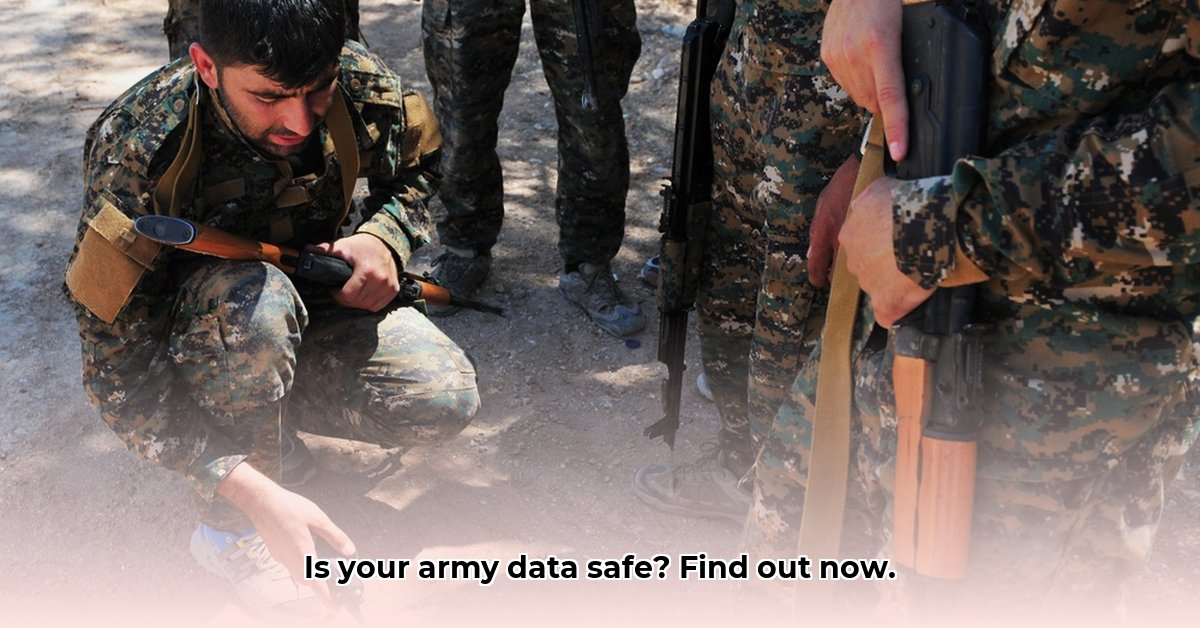
Maintaining robust cybersecurity within the Military Mobile Command (MMC) Army necessitates a multi-faceted approach encompassing technological safeguards, adherence to legal frameworks, and informed user consent. This article provides a comprehensive overview of the MMC Army's cybersecurity posture, emphasizing consent implications and offering actionable steps for improved security.
Understanding MMC Army Network Security
The Department of Defense (DoD), including the MMC Army, employs a robust network security framework. Access to DoD systems inherently implies consent to network monitoring. This proactive approach is essential for identifying and mitigating threats, including cyberattacks, criminal investigations, and espionage attempts. While the specific technical details of monitoring remain classified to protect the integrity of security measures, the DoD assures that monitoring activities are conducted in compliance with relevant legal and regulatory frameworks, safeguarding individual rights to private communication.
Consent and Surveillance: The DoD's Approach
The DoD policy concerning network monitoring is transparently communicated to users. By accessing DoD systems, users implicitly consent to the monitoring of their online activities. The overarching objectives of this monitoring include:
- Cyberattack Prevention: Early detection and mitigation of malicious activities.
- Criminal Investigation Support: Facilitating investigations into cybercrimes.
- Espionage Countermeasures: Identifying and preventing espionage attempts.
It's crucial to understand that this monitoring is focused on network activity and does not violate the privacy of personal communications unless otherwise legally permitted.
The Technical Side: A Multi-Layered Defense
The MMC Army employs a sophisticated, multi-layered cybersecurity architecture. While specific technologies remain undisclosed to prevent compromise, the system likely incorporates various hardware and software solutions to monitor network traffic, detect intrusions, and analyze data for suspicious behavior. This layered defense minimizes the potential for a single point of failure, offering robust protection against a wide range of threats. The system is designed for continuous monitoring and adaptation to evolving cybersecurity threats.
Managing Risks: Practical Steps for Enhanced Security
The MMC Army faces several key cybersecurity risks, including:
- Insider Threats: Malicious or negligent actions performed by authorized personnel.
- Advanced Persistent Threats (APTs): Highly sophisticated and persistent attacks, often state-sponsored.
- Data Breaches: Unauthorized access to sensitive data.
- Legal Non-Compliance: Failure to adhere to relevant laws and regulations.
- Denial-of-Service (DoS) Attacks: Attempts to disrupt network availability.
The following table summarizes mitigation strategies:
| Threat | Likelihood | Impact | Mitigation Strategy |
|---|---|---|---|
| Insider Threats | Moderate | Very High | Enhanced access controls, comprehensive security awareness training, robust background checks, continuous monitoring. |
| Advanced Persistent Threats | Low | Very High | Proactive threat hunting, advanced detection systems (e.g., SIEM, IDS/IPS), regular security audits, robust incident response planning. |
| Data Breaches | Low | High | Data encryption (at rest and in transit), strong authentication protocols (e.g., MFA), regular vulnerability assessments, comprehensive incident response plans. |
| Legal Non-Compliance | Moderate | Very High | Regular legal reviews, up-to-date security policies, continuous staff training, legal consultations. |
| Denial-of-Service Attacks | Moderate | Moderate | Redundant network infrastructure, robust traffic filtering, regular stress testing, DDoS mitigation solutions. |
Actionable Steps:
- MMC Army Cybersecurity Teams: Implement and maintain advanced threat detection systems, including AI and machine learning capabilities, and continuously refine access control policies.
- Legal Teams: Ensure ongoing compliance with relevant laws and regulations through regular legal review and policy updates.
- Military Personnel: Participate in regular cybersecurity training to develop secure online habits and practices.
- External Auditors: Conduct periodic independent security audits to verify the effectiveness of security measures.
Legal and Regulatory Compliance: Navigating the Legal Landscape
The MMC Army’s cybersecurity practices must adhere to all applicable laws and regulations, including the Fourth Amendment and other relevant statutes. The army's legal department plays a vital role in ensuring compliance, conducting regular legal reviews and guiding the development of security protocols. This ensures that security measures are both effective and legally sound.
Conclusion: A Proactive Approach to Cybersecurity
The MMC Army's commitment to robust cybersecurity requires a proactive, multi-pronged approach. Continuous adaptation to evolving threats, rigorous training for personnel, and the consistent update of security policies and technologies are vital to maintaining a secure network environment. Collaboration across all stakeholders – cybersecurity teams, legal professionals, military personnel, and external auditors – is paramount in achieving and maintaining a strong cybersecurity posture. Understanding and actively participating in this shared responsibility is crucial for the security of the MMC Army's network and the protection of its data.
⭐⭐⭐⭐☆ (4.8)
Download via Link 1
Download via Link 2
Last updated: Sunday, May 04, 2025